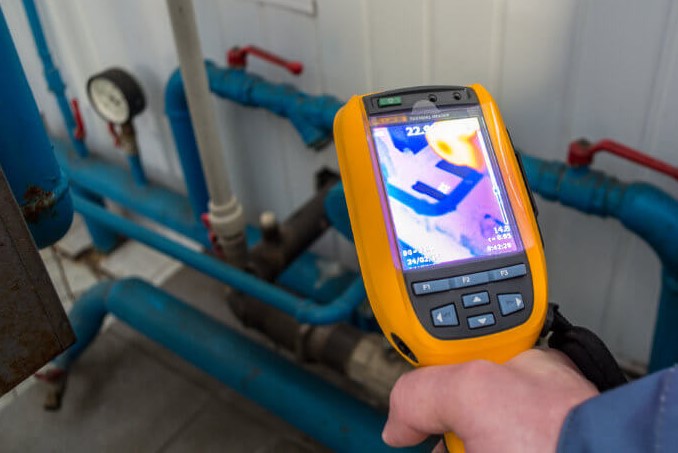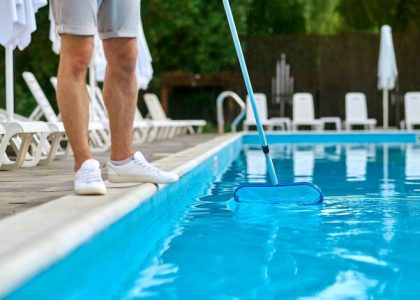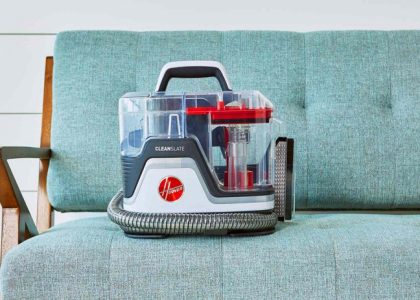
Water leaks can cause significant damage to your home if not identified and addressed in time. From minor drips that go unnoticed to major pipe bursts, water leaks are often the silent culprits behind costly repairs and structural issues. Early detection is key to preventing these problems from escalating. Water leak detection tools can help you pinpoint leaks before they wreak havoc on your property. These innovative tools are designed to detect leaks efficiently, allowing homeowners to take action quickly and minimize damage. In this article, we’ll explore the different types of water leak detection tools, how they work, and how they can save you money and prevent potential disasters.
Why Water Leak Detection Matters
Water leaks are not always visible to the naked eye. Sometimes, the damage is hidden behind walls, under floors, or beneath your foundation. If left undetected, even a small leak can lead to mold growth, wood rot, weakened foundations, and high water bills. Over time, these issues can cause long-term damage to your home’s structure and increase the cost of repairs.
Water leak detection tools play a vital role in catching leaks early. They can help you identify where leaks are coming from, whether it’s from plumbing pipes, appliances, or even the roof. With accurate and timely detection, you can avoid unnecessary damage and save money on repairs. Furthermore, many of these tools can help detect leaks before they turn into major problems, which is essential for preserving the integrity of your home.
1. Acoustic Leak Detectors
One of the most widely used water leak detection tools is the acoustic leak detector. These devices detect the sound of water escaping through pipes, even if the leak is not visible. Acoustic leak detectors work by using sensitive microphones or sensors that pick up the sound waves generated by water escaping from a pressurized pipe. The sounds of leaking water are amplified and analyzed to help pinpoint the location of the leak.
Acoustic leak detection is particularly effective in plumbing systems, where leaks can occur in hidden or hard-to-reach pipes. These devices can detect even the faintest of sounds, making them ideal for early leak detection. Some advanced models also come with built-in data loggers that track the leak’s progression, allowing you to monitor any changes over time.
These detectors are perfect for professionals, but there are also simpler models available for homeowners. Acoustic leak detectors help you avoid tearing up walls or floors to search for leaks manually. Instead, they allow for non-invasive detection, saving time and money on unnecessary repairs.
2. Infrared Thermography Cameras
Infrared thermography is another powerful tool for water leak detection. These cameras use infrared radiation to detect temperature variations caused by moisture behind walls or under floors. When water leaks into the surrounding materials, it creates a temperature difference between the wet and dry areas, which the infrared camera can capture. The camera then displays an image or heat map, allowing you to visually locate the leak without damaging the walls or floors.
Infrared cameras are highly effective for detecting leaks that are not visible to the naked eye, especially in areas with insulation or behind finished surfaces. These tools are especially useful for detecting leaks in places like ceilings, basements, and walls, where water damage may not be immediately apparent.
Though infrared thermography cameras can be expensive, there are consumer-grade models available for DIY home detection. For larger leaks or commercial applications, professionals often use high-end infrared cameras that offer high resolution and accuracy. These cameras provide a detailed visual representation of the leak’s location and size, allowing homeowners and professionals to take targeted action and prevent further damage.
3. Smart Water Leak Detection Systems
Advancements in technology have led to the development of smart water leak detection systems. These systems consist of sensors placed in key areas of your home, such as the basement, kitchen, or near appliances. The sensors continuously monitor for signs of water leakage. When a leak is detected, the system sends an alert to your smartphone or other connected devices, notifying you immediately so you can take action.
Smart water leak detection systems are particularly useful for homeowners who are not always home or who want to monitor their homes remotely. These systems can detect even the smallest leaks and alert you before the damage becomes significant. Many smart systems also have automatic shut-off valves that can stop the water supply to the affected area as soon as a leak is detected, further minimizing the damage.
Some systems integrate with other smart home devices, such as smart thermostats or water monitoring devices, to provide a comprehensive approach to water leak detection and home maintenance. For example, if a system detects a significant temperature change associated with a water leak, it may automatically adjust the thermostat to prevent further damage from frozen pipes.
4. Moisture Meters
Moisture meters are handheld tools used to measure the moisture content of building materials like wood, drywall, or concrete. These tools work by sending electrical currents through the material and measuring the resistance. When water is present, it increases the material’s conductivity, which is detected by the meter. By checking moisture levels in areas prone to leaks, such as basements, crawl spaces, or under sinks, homeowners can quickly identify problem areas.
Moisture meters are a great tool for assessing the extent of water damage after a leak has been discovered. They are also useful for determining if a leak is still active or if the affected area has dried out. This can help with planning repairs and deciding whether additional intervention is needed to prevent mold or rot from spreading.
Moisture meters are available in both pin-type and pinless models. Pin-type meters use probes that penetrate the material to measure moisture levels, while pinless models use electromagnetic signals to detect moisture without damaging the surface. For DIY leak detection, pinless moisture meters are a good option since they are non-invasive and easy to use.
How to Choose the Right Water Leak Detection Tool
Choosing the right water leak detection tool depends on several factors, such as the type of leak, the size of your home, your budget, and whether you prefer a professional or DIY approach. Here are some things to consider when selecting the best tool for your needs:
- Type of Leak: Consider the areas of your home that are most susceptible to water damage, such as bathrooms, kitchens, and basements. Some tools, like infrared cameras, are better suited for detecting hidden leaks, while others, like moisture meters, are ideal for assessing water damage after a leak is found.
- Budget: While professional-grade tools like infrared thermography cameras can be expensive, there are more affordable options available for homeowners. DIY leak detection systems and basic acoustic detectors can still offer excellent results at a lower cost.
- Ease of Use: Some leak detection tools require professional knowledge to operate effectively. However, there are many user-friendly options available for DIY homeowners, such as smart leak detectors and moisture meters.
- Accuracy: Choose tools that offer accurate readings to help pinpoint the exact location of the leak. Tools with high sensitivity and advanced features may be more expensive but can provide a higher level of accuracy.
Water leak detection tools are essential for preventing costly damage to your home. By identifying leaks early, these tools help protect your property from long-term issues such as mold, mildew, and structural damage. Whether you choose an acoustic leak detector, an infrared camera, a smart detection system, or a moisture meter, each of these devices provides a reliable solution for homeowners looking to stay ahead of potential water problems. Investing in water leak detection tools not only saves you money on repairs but also gives you peace of mind knowing that your home is safe from hidden leaks.


